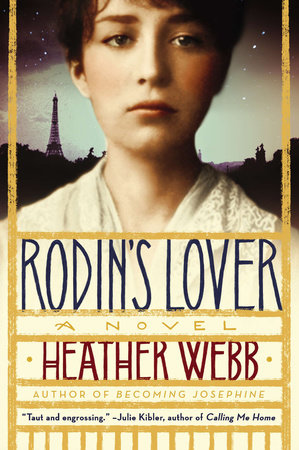
Damn it, Camille!…[We] want you to be settled and loved like other women. That is all.
Paternal backing was often supplanted—or supplemented—by the support of a mentor. Berthe Morisot had Edouard Manet, Mary Cassatt had Edgar Degas. And Camille Claudel had Auguste Rodin. It seems obvious that two artists working together would be engaged in an on-going conversation about ideas and techniques. Sophie Tauber-Arp and Jean Arp developed Orphism together. As Camille says, in Rodin’s Lover:Rodin has fashioned his works around my ideas and I have done the same with his.But that sharing could cross the line into theft. Fathers and husbands of especially successful artists signed their names to women’s artwork in order to earn more money for those works. Elisabeth Vigée-Lebrun’s husband, a mediocre artist, signed his name to her superior paintings in order to improve his own artistic reputation. And art gallery owners were also guilty of fudging the facts. Paintings formerly attributed to Franz Hals were cleaned to reveal the distinctive signature of 17thc. Dutch artist Judith Leyster. Here is how author Heather Webb describes the moment when Camille discovers that her works have been appropriated by Rodin:
And then she saw them—her Young Girl with a Sheaf, but it was called Galatée, and her Slave bust was now Tête de Rieur. She froze. Auguste had stolen her ideas and created his own exact replicas.
Misattribution, appropriation, two artists of equal genius, one eclipsed by her partner’s colossal presence. Is it any wonder that Camille Claudel ended up in an asylum? Sadly, the story of Rodin’s Lover was all too common in the history of women artists.